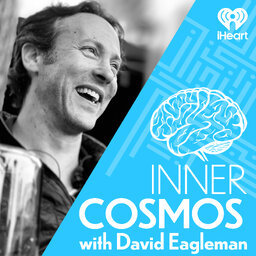Ep43 "How do we remember?" (Time Traveling Part 1)
How do billions of neurons store your home address, your ability to ride a bike, and the history of your life? How does memory work in the brain, and how is it different from the way a computer stores information? And what does any of this have to do with the Happy Birthday song, squirrels hiding acorns, bards memorizing epics, or people who cannot forget any of the events of their life? Join Eagleman to learn how and why your brain continually time travels to previous moments.
 Inner Cosmos with David Eagleman
Inner Cosmos with David Eagleman


